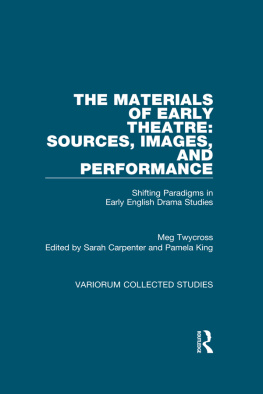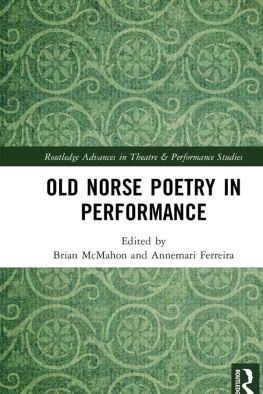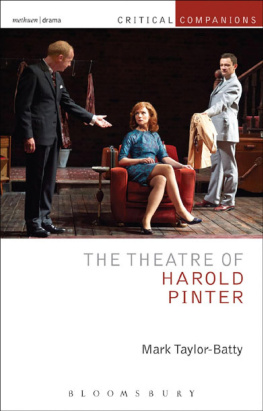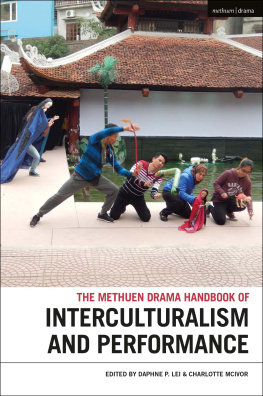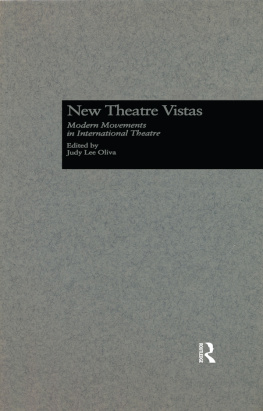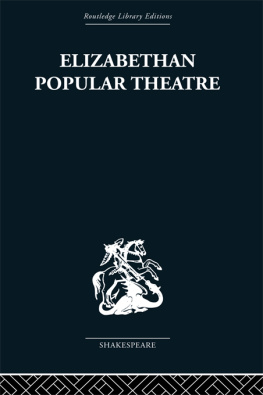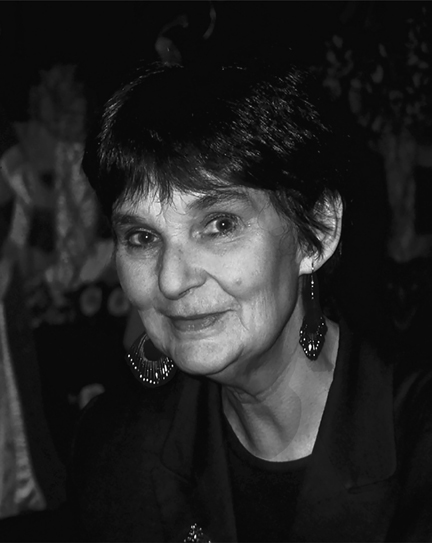First published 2018
by Routledge
2 Park Square, Milton Park, Abingdon, Oxon OX14 4RN
and by Routledge
711 Third Avenue, New York, NY 10017
Routledge is an imprint of the Taylor & Francis Group, an informa business
2018 selection and editorial matter, Sarah Carpenter and Pamela King; individual chapters, Meg Twycross
The right of Sarah Carpenter and Pamela King to be identified as the authors of the editorial material, and of Meg Twycross for the individual chapters, has been asserted in accordance with sections 77 and 78 of the Copyright, Designs and Patents Act 1988.
All rights reserved. No part of this book may be reprinted or reproduced or utilised in any form or by any electronic, mechanical, or other means, now known or hereafter invented, including photocopying and recording, or in any information storage or retrieval system, without permission in writing from the publishers.
Trademark notice: Product or corporate names may be trademarks or registered trademarks, and are used only for identification and explanation without intent to infringe.
British Library Cataloguing in Publication Data
A catalogue record for this book is available from the British Library
Library of Congress Cataloging in Publication Data
Names: Twycross, Meg, author. | Carpenter, Sarah, editor. | King, Pamela M., editor.
Title: The materials of early theatre: sources, images, and performance : shifting paradigms in early
English drama studies / Meg Twycross ; edited by Sarah Carpenter and Pamela King.
Description: Abingdon, Oxon ; New York, NY : Routledge, 2018. | Series: Variorum collected
studies series | Includes bibliographical references and index.
Identifiers: LCCN 2017030229| ISBN 9781472488084 (hardback : alk. paper) |
ISBN 9781315123004 (ebook)
Subjects: LCSH: Theater--England--History--Medieval, 500-1500. | Theater--Production and
direction--England--History. | English drama--To 1500--History and criticism. | Mysteries and
miracle-plays, English--History and criticism.
Classification: LCC PN2587 .T87 2018 | DDC 792.0942/0902--dc23
LC record available at https://lccn.loc.gov/2017030229
ISBN: 978-1-4724-8808-4 (hbk)
ISBN: 978-1-315-12300-4 (ebk)
Typeset in Times New Roman
by Servis Filmsetting Ltd, Stockport, Cheshire
VARIORUM COLLECTED STUDIES SERIES CS1068
VARIORUM COLLECTED STUDIES SERIES
The Materials of Early Theatre: Sources, Images, and Performance
Also in the Variorum Collected Studies Series:
MEG TWYCROSS, EDITED BY SARAH CARPENTER AND PAMELA KING
The Materials of Early Theatre: Sources, Images, and Performance Shifting Paradigms in Early English Drama Studies
SEYMOUR DRESCHER
Pathways from Slavery
British and Colonial Mobilizations in Global Perspective
DAVID JACOBY
Medieval Trade in the Eastern Mediterranean and Beyond
GILES CONSTABLE
Medieval Thought and Historiography
GILES CONSTABLE
Medieval Monasticism
MICHAEL J.B. ALLEN
Studies in the Platonism of Marsilio Ficino and Giovanni Pico
ALEXANDRA F. JOHNSTON, EDITED BY DAVID N. KLAUSNER
The City and the Parish: Drama in York and Beyond
Shifting Paradigms in Early English Drama Studies
BENJAMIN Z. KEDAR
Crusaders and Franks
Studies in the History of the Crusaders and the Frankish Levant
DAVID MILLS, EDITED BY PHILIP BUTTERWORTH
To Chester and Beyond: Meaning, Text and Context in Early English Drama Shifting Paradigms in Early English Drama Studies
NELSON H. MINNICH
The Decrees of the Fifth Lateran Council (151217)
Their Legitimacy, Origins, Contents, and Implementation
JOHN MONFASANI
Greek Scholars between East and West in the Fifteenth Century
https://www.routledge.com/history/series/VARIORUMCS
Contents
by Sarah Carpenter and Pamela King
, Records of Early English Drama Newsletter, (1978:2), pp. 1033
, Medieval English Theatre, 14 (1992), pp. 7794
, Leeds Studies in English, n.s. 29 (1998), pp. 35980
, Medieval English Theatre, 29 (2007), pp. 12150
, Bring Furth the Pagants: Essays in Early English Drama presented to Alexandra F. Johnston, ed. by David N. Klausner and Karen Sawyer Marsalek (Toronto: University of Toronto Press, 2007), pp. 10531
, Medieval Studies for J.A.W. Bennett Aetatis Suae LXX, ed. by Peter Heyworth (Oxford: Clarendon, 1981), pp. 27396
, Drama and Religion, ed. by James Redmond (Cambridge: Cambridge University Press, 1983), pp. 65110
, Medieval English Theatre, 5:2 (1983), pp. 12380
, Medieval English Theatre, 12:1 (1990), pp. 3479
, Langland, the Mystics, and the Medieval Religious Tradition, ed. by Helen Phillips (Cambridge: Brewer, 1990), pp. 27186
, Medieval English Theatre, 18 (1998 for 1996), pp. 99141
, Medieval English Theatre, 2:1 (1980), pp. 1541, and 2:2 (1980), pp. 8098
, Medieval English Theatre, 10:1 (1988), pp. 416
, Medieval English Theatre, 17 (1995), pp. 96119
, European Drama 4: Selected Papers from the Fourth International Conference on Aspects of European Medieval Drama, Camerino, 58 August 1999, ed. by Andr Lascombes (Turnhout: Brepols, 2001), pp. 7790
Guide
Part I:
York
Part III:
Theology
Books for the Unlearned
In 1446 William Revetour, chaplain of St Williams Ousebridge, York, and a theatrically minded clergyman, left in his Will to the Brotherhood of Corpus Christi in York, a certain book called Le Crede Play , with the books and banners thereto appertaining to the Guild of St Christopher, a certain play of St James the Apostle, put together in six pageants/pages (the word paginae is ambiguous here), and to the Girdlers Guild, a gilt crown and girdle for their Corpus Christi play, the Massacre of the Innocents.
Revetour may not have written the Creed Play himself, though he seems in some undefined way to have been in charge of it, but he would clearly have agreed with the sentiments later attributed to him by the Corpus Christi Guild, that it was to be performed to the glory of God and the instruction of the people. The books in English, though he may have used them himself, sound as if they were meant to be read aloud to lay people, as Margery Kempes spiritual director read aloud to her. In his Will he leaves them to lay friends. We ought, I think, to look at the religious plays of the fifteenth and early sixteenth centuries in the light of the devotional and instructional reading of men like Revetour, their potential authors, and men like Tubbac, most certainly their audience.
J.W. Robinson and Clifford Davidson have already written in some detail about this affective approach, particularly to the Passion of Christ.
Margaret Deanesley suggests that its popularity may be partly due to the fact that it was used by lay people as a substitute for the Bible, especially once it had been translated: a vernacular Life of Christ, with the orthodox editors interpretation often inserted, was less likely to mislead the laity than the naked text of the Gospels and no appeal could be made to it in support of theological argument. In England at the beginning of the fifteenth century, when the plays were first becoming established, Archbishop Arundel not only took the negative step of prohibiting, in 1408, the reading of English Bibles without episcopal licence, but before 1410 he took the positive one of licensing a substitute. This authorised version was the translation of the Meditationes by Nicholas Love, Prior of the Charterhouse of Mount Grace in Yorkshire, which itself, to quote Deanesley, was probably more popular than any other single (English) book in the fifteenth century.

